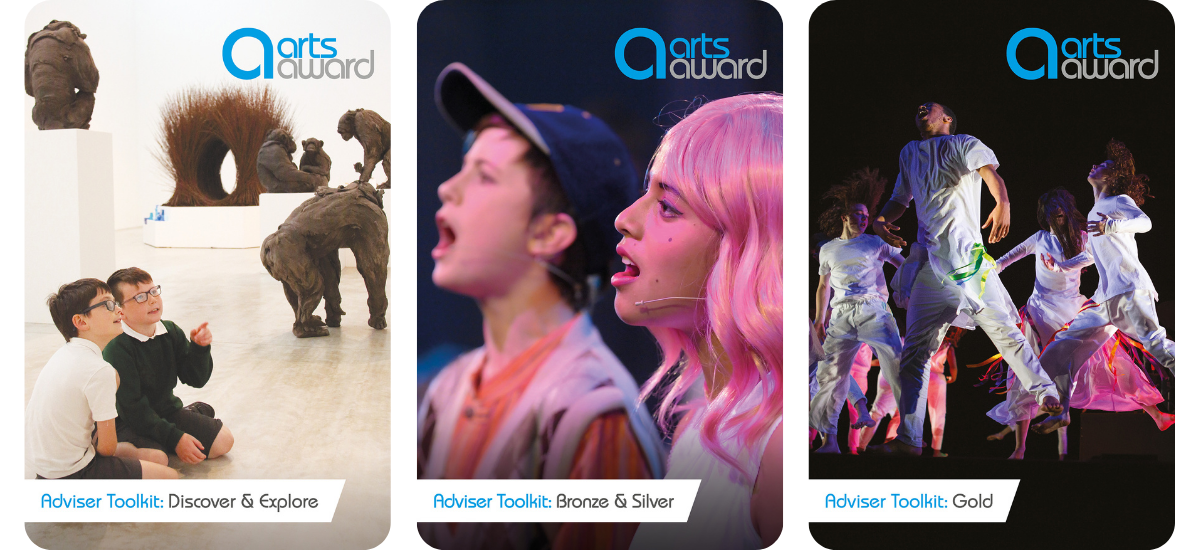
Back to basics: Using your adviser toolkit
BY: Nicola King
13 Feb 2023
In this blog we will explore the most important resource every adviser has, their toolkit, and how to use this to ensure your young people produce the right evidence.
At your adviser training, and in any communication from the Arts Award team, we will stress the importance of always referring back to your adviser toolkit. The reason for this is that it contains vital information to support your Arts Award delivery. Let’s take a refresher by looking at your toolkit in detail…
Each Part in your toolkit begins with a ‘what young people should do’ and ‘what advisers should do’ section. This tells you what is expected for the Part, it is your go-to guide for what you and your group need to do. This section will also make it clear how much support the adviser is expected to give, and how this changes as we progress from Discover all the way through to Gold, with the adviser moving from facilitating activities, to discussing and offering guidance as the young person plans their own projects.
Evidence required in portfolios
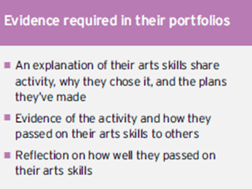
The evidence required box clearly sets out everything that you and, if you are selected for moderation, the moderator will be looking for in the young people’s portfolios. In this example, from Bronze Part D, the portfolio should include an explanation of their Arts Skills Share, why the young person chose this activity, and also the plans they have made, they should also include evidence of the activity taking place and how they passed on their arts skills to others, plus a reflection on how well they passed on their arts skills.
Use the bullet points in this box as a checklist and ask yourself where this evidence is in the portfolio? Can it be clearly found? Evidence should be explicit rather than implied, and therefore not need explaining verbally; for example the reflection on how well young people passed on their arts skill is not evidence of actually passing on their arts skill. Similarly, evidence of the skill share taking place, should not be presumed as evidence that the young person planned an activity. Each bullet point must be taken separately.
Remember, just because you, as the adviser, know that the young person achieved something doesn’t mean that this is clear in the portfolio. Try to view the portfolio objectively as the moderator would see it.
What young people should demonstrate through their evidence
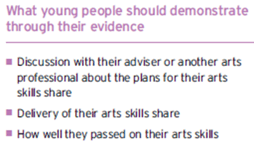
This box can sometimes be overlooked but it is inherently linked to the ‘evidence required’ box and worth taking the time to go over the points found here, as they will provide clarity over what the evidence must demonstrate. Again, looking at Bronze Part D, you can see that the young person should demonstrate (within their evidence) that they have discussed their plans for the Arts Skills Share with their adviser, or another arts professional, and therefore made appropriate plans. They should demonstrate within their evidence that they have delivered their Arts Skills Share and also provide detail on how well they passed on their arts skills. So, what we’re asking them to demonstrate in this box should also be explicitly detailed within their portfolio evidence.
Assessment criteria
A common question we get is around ‘how much’ work a young person should be producing for their award. For example, what should the word count be for their review of an arts event, or what the difference is between an arts review at Bronze, and an arts review at Silver? While we do not have a specific word count for any Parts, the assessment criteria will help you to understand the breadth and depth of the evidence we expect at each level.
|
|
If we take a look at the examples of ‘Art form knowledge and understanding’ from Bronze and Silver, left, we can see that while at Bronze we are only expecting a basic understanding of arts practice and some knowledge of arts provision in the community, at Silver we are expecting this knowledge to have developed and for the young person to have some knowledge of their own art form and its relation to arts provision in the community, along with a growing understanding of how to develop their arts practice and leadership skills.
This is a clear step up in terms of what the young person should be demonstrating, and the evidence they produce should support this.
If we take a look at the ‘Communication’ assessment criteria, again for Bronze and Silver, we can see that at Bronze we are expecting a basic understanding of effective communication, and that young people will demonstrate that through straightforward discussions using simple language, and at Silver young people are expected to use art form appropriate vocabulary, to structure their communication appropriately, and to provide some justification and reasoning. The difference in the depth of work between the two is clear.
Remember, the assessment criteria indicates the standard young people should reach and this is what the adviser should be, and a moderator will be, looking for. In the examples above this equates to a Level 1 standard for Bronze and a Level 2 standard for Silver. The assessment criteria underpins the award levels and should be clearly demonstrated throughout all their evidence. Ensure you are working at the equivalent level in order to meet these expected standards, if the young people have provided evidence but have not fully met the assessment criteria standard required then they risk being assessed as below pass.
We hope you found this refresher on using the adviser toolkit useful, and that it encourages you to take a deeper look at yours. Whether planning your Arts Award project, supporting young people to plan theirs, or assessing portfolios before entering, your adviser toolkit should never be far from your side!
If you have any questions about your Arts Award delivery, please get in touch with us on artsaward.enquiries@trinitycollege.com.
Related posts
BY: Cathy Thornhill
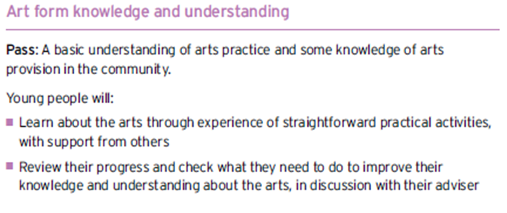

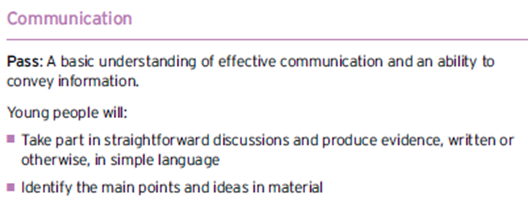
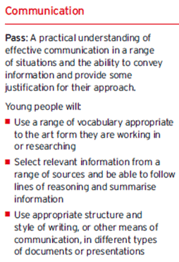


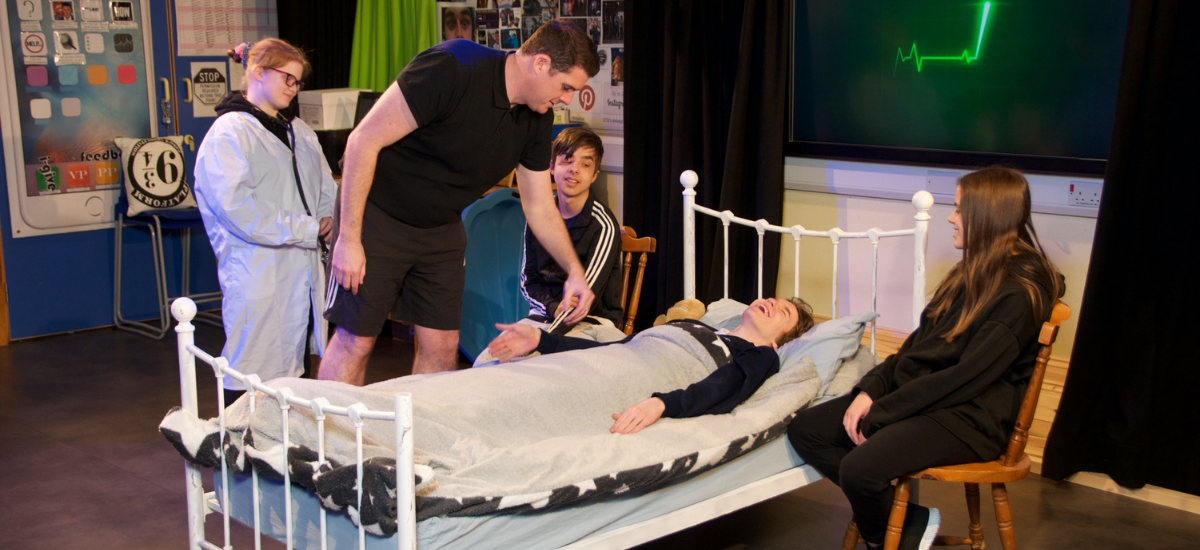
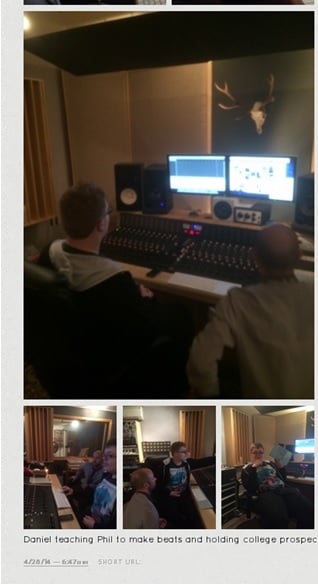
Comments & Replies